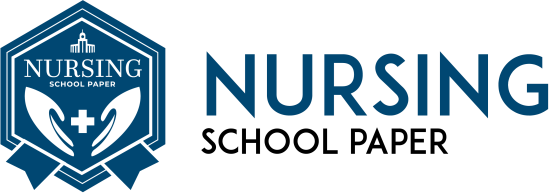
Assignment: Pediatric Dosage Guidelines
The unapproved use of approved drugs, also called off-label use, with children is quite common. This is because pediatric dosage guidelines are typically unavailable since very few drugs have been specifically researched and tested with children.
When treating children, prescribers often adjust dosages approved for adults to accommodate a child’s weight. However, children are not just “smaller” adults. Adults and children process and respond to drugs differently in their absorption, distribution, metabolism, and excretion. Children even respond differently during stages from infancy to adolescence. This poses potential safety concerns when prescribing drugs to pediatric patients. As an advanced practice nurse, you have to be aware of safety implications of the off-label use of drugs with this patient group.
To prepare:
Review the Bazzano et al. and Mayhew articles in the Learning Resources. Reflect on situations in which children should be prescribed drugs for off-label use.
Think about strategies to make the off-label use and dosage of drugs safer for children from infancy to adolescence. Consider specific off-label drugs that you think require extra care and attention when used in pediatrics.
With these thoughts in mind:
By Day 3
Post an explanation of circumstances under which children should be prescribed drugs for off-label use. Then, describe strategies to make the off-label use and dosage of drugs safer for children from infancy to adolescence. Include descriptions and names of off-label drugs that require extra care and attention when used in pediatrics.
CLASS RESOURCES
Arcangelo, V. P., Peterson, A. M., Wilbur, V., & Reinhold, J. A. (Eds.). (2017). Pharmacotherapeutics for advanced practice: A practical approach (4th ed.). Ambler, PA: Lippincott Williams & Wilkins.
Review Chapter 4, “Principles of Pharmacotherapy in Pediatrics” (pp. 53-63)
This chapter explores concepts relating to drug selection, administration, and interaction for pediatric patients. It also compares age-related pharmacokinetic differences in children and adults.
Chapter 17, “Ophthalmic Disorders” (pp. 221-243)
This chapter examines the causes, pathophysiology, diagnostic criteria, and drug treatment for four ophthalmic disorders: blepharitis, conjunctivitis, keratoconjunctivitis sicca, and glaucoma. It also explores methods of monitoring patient response to treatment.
Chapter 43, “Attention-Deficit/Hyperactivity Disorder” (pp. 743-756)
This chapter explains the process of diagnosing Attention-Deficit/Hyperactivity Disorder (ADHD). It also identifies drugs for treating patients with ADHD, including proper dosages, selected adverse events, and special considerations for each drug.
Chapter 51, “Immunizations” (pp. 906-926)
This chapter explores vaccines that are licensed for use in the United States and provides a recommended vaccination schedule for pediatric patients and adults.
Chapter 52, “Smoking Cessation” (pp. 927-943)
This chapter examines clinical implications of smoking. It also covers various approaches for aiding patients who are dependent on nicotine but want to stop smoking.
Chapter 54, “Weight Loss” (pp. 945-956)
This chapter begins by reviewing patient factors that contribute to obesity. It also examines drug therapy for initiating weight loss in patients, as well as alternative non-drug treatments.
Bazzano, A. T, Mangione-Smith, R., Schonlau, M., Suttorp, M. J., & Brook, R. H. (2009). Off-label prescribing to children in the United States outpatient setting. Academic Pediatrics, 9(2), 81–88.
Note: Retrieved from the Walden Library databases.
This study examines the frequency of off-label prescribing to children and explores factors that impact off-label prescribing.
Mayhew, M. (2009). Off-label prescribing. The Journal for Nurse Practitioners, 5(2), 122–123.
Note: Retrieved from the Walden Library databases.
This article reviews the prevalence of off-label prescribing, including its benefits and risks. It also explores issues regarding the safety of off-label prescribing and when it is unavoidable.
Drugs.com. (2012). Retrieved from http://www.drugs.com/
This website presents a comprehensive review of prescription and over-the-counter drugs including information on common uses and potential side effects. It also provides updates relating to new drugs on the market, support from health professionals, and a drug-drug interactions checker.
You must proofread your paper. But do not strictly rely on your computer’s spell-checker and grammar-checker; failure to do so indicates a lack of effort on your part and you can expect your grade to suffer accordingly. Papers with numerous misspelled words and grammatical mistakes will be penalized. Read over your paper – in silence and then aloud – before handing it in and make corrections as necessary. Often it is advantageous to have a friend proofread your paper for obvious errors. Handwritten corrections are preferable to uncorrected mistakes.
Use a standard 10 to 12 point (10 to 12 characters per inch) typeface. Smaller or compressed type and papers with small margins or single-spacing are hard to read. It is better to let your essay run over the recommended number of pages than to try to compress it into fewer pages.
Likewise, large type, large margins, large indentations, triple-spacing, increased leading (space between lines), increased kerning (space between letters), and any other such attempts at “padding” to increase the length of a paper are unacceptable, wasteful of trees, and will not fool your professor.
The paper must be neatly formatted, double-spaced with a one-inch margin on the top, bottom, and sides of each page. When submitting hard copy, be sure to use white paper and print out using dark ink. If it is hard to read your essay, it will also be hard to follow your argument.

